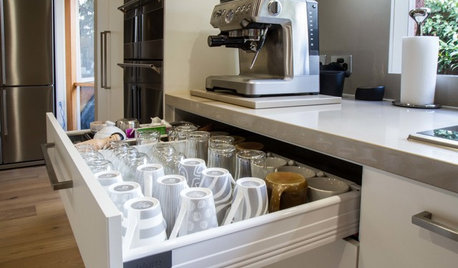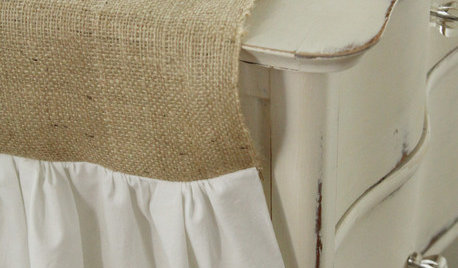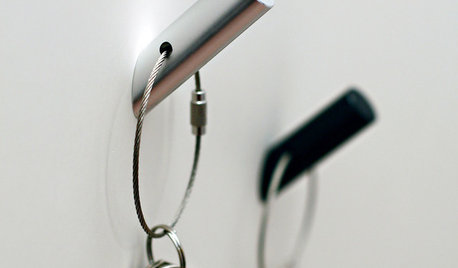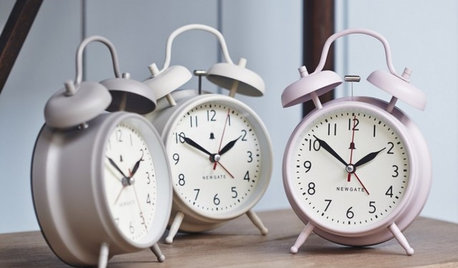Fraying
mrsbeasley
12 years ago
Related Stories

GARDENING AND LANDSCAPINGDream Spaces: 12 Decks That Rise Above It All
Tucked into upper levels, these inspiring outdoor spaces provide more privacy and relaxation above the fray
Full Story
KITCHEN STORAGEPulling Power: Clever Drawer Tactics for a Kitchen
It’s not how many drawers you have in your kitchen; it’s how they work for you
Full Story
PETSSo You Want to Get a Cat
If you're a cat lover, the joys outweigh any other issue. If you haven't lived with one yet, here are a few things to know
Full Story
DECORATING GUIDESHandmade Home: How to Sew a Table Runner
Make an affordable and easy ruffled burlap table runner in a few simple steps
Full Story
FEEL-GOOD HOMEInherited Pieces: Embrace the Approach That Works for You
How you remember and honor loved ones through heirlooms is your decision alone
Full Story
FURNITUREOutdoor Fabric Joins the In Crowd
Stepping out in even the poshest interiors, durable outdoor fabrics have transcended sidekick status
Full Story
DECORATING GUIDESBulletproof Decorating: Upholstery That Stands Up to Anything
Kids and pets are no match for fabrics as durable as these, which meet higher style standards than ever
Full Story
PRODUCT PICKSGuest Picks: Household Basics That Don't Do Boring
You'll never look at can openers, filing cabinets, key holders and more the same way again
Full Story
PRODUCT PICKSGuest Picks: Good Morning to You
Start the day with a smile, courtesy of 20 pieces from a retro radio to an au courant kettle
Full StorySponsored
More Discussions







grammyp
calliope
Related Professionals
Beaufort Furniture & Accessories · Cedar Rapids Furniture & Accessories · Frisco Furniture & Accessories · Reston Furniture & Accessories · Van Nuys Furniture & Accessories · Wanaque Interior Designers & Decorators · Apopka Flooring Contractors · Cottage Grove Flooring Contractors · Madison Flooring Contractors · Powder Springs Flooring Contractors · Redlands Flooring Contractors · Saint Louis Park Flooring Contractors · Alum Rock Flooring Contractors · Mansfield Furniture & Accessories · Palmetto Bay Furniture & AccessoriesK8Orlando
jennifer_in_va
bozogardener
magothyrivergirl
jennifer_in_va
mrsbeasleyOriginal Author
magothyrivergirl
meskauskas
calliope
rosajoe_gw